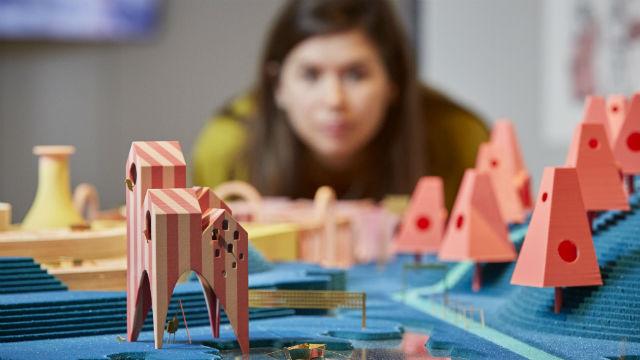What is Wellcome’s Making Nature about? Usually with museum
exhibitions the answer is either a famous artist or individual (Bowie, Lockwood
Kipling, Rauschenberg) or a theme which can typically be summed up in one word
(underwear, Modernism, maps, mental health). Making Nature is about, well, exactly that. The
idea that nature is a construct manufactured by human action and, more
specifically, museums. Pretty conceptual for an exhibition right? This perhaps
why the Wellcome hasn’t received universally glowing reviews for this one (see
for example this Guardian think piece). When you build a show on a concept,
people can disagree. It’s probably why most museum’s don’t do it. But it’s also
why ALL MUSEUMS SHOULD. Making Nature is the thought-provoking, risk-taking
exhibition you’ve been waiting for from the Wellcome. And we love it.
 |
| Richard Ross, Muséum National D'Histoire Naturelle, Paris, France 1982 © the artist |
If Making Nature had only been one room, it still would have
been the best thing I’ve seen a museum do in ages. The first gallery had
everything you could want from a gallery of art and science. Entitled ‘
Ordering’, the opening to the exhibition does a fantastic job of demonstrating
how a museum can communicate a complex idea. The concept is just that, how
humans have ordered the world. From the Bible to Linneaus to Bonnet’s ladder of
natural being, humans have been trying to rationalize and categorize the world
around them from day one. Archival documents are used to great effect –
providing a sense of history and context, but without being too ‘this is a
history lesson’. A poster of Juliana Pastrana, the Bearded Lady, asks us to
consider what happens when something defies categorization. If you weren’t
scared by the hidden taxidermy fox, you are lying. I genuinely jumped.
 |
| Roger Fenton, Skeleton of Man and of the Male Gorilla (Troglodytes Gorilla) II, c.1855 © Victoria and Albert Museum, |
|
|
Making Nature is full of unusual display techniques, but
they are all for a purpose. The idea that a curator has suggested this off the
wall exhibition, conceptual design and someone said – yes we will support you
in that, heartens me. We are not an industry that has to put out cookie cutter
exhibitions. The Wellcome knew full well that putting taxidermy animals in
unusual places (ie dead on the floor) would upset some people. But that’s kind
of the point. The animals serve a dual purpose: to push you to think about
conservation (there’s a reason why they’ve picked the examples they have cough
badger) and to mix up the way we are used to viewing animals. Animals go in
nice dioramas where they look like they are alive, right? Yeah but we made
that. And that’s the point.
 |
| Richard Ross, British Museum, Natural History, London, England 1985 © the artist |
I don’t want to go into every single detail and spoil the visit
for you. Let’s just say, you’ll never look at Richard Owen’s ‘cathedral to
science’ (aka the Natural History Museum) the same way again. Or the ZSL Zoo
for that matter. But I did just want to say a few words about the last room
about Postnatural History. It’s clear from the get-go that this room has been
curated by someone different. The reliance on speakers to tell the narrative is
a little jarring, and not all of the displays seem to fit in exactly with the
theme as it explained in the room label. And while this was a bit off-putting
for me at first, I’ll forgive it because its just so damn interesting. The
Centre for Postnatural History is interested in how we are making new animals
and purposefully modifying the natural world. From multi-coloured budgies to
radioactive rodents to bacteria which has learned to say hello, are we looking
at a nature which is no longer natural? The stories in this room are bizarre
and somewhat frightening.
 |
| Transgenic mosquito (Aedes agypti), 2009, Pinned specimen © Center for PostNatural History |
Making Nature is without a doubt challenging. It’s
challenging to audiences who think they know about nature and how it works.
Challenging to traditional exhibition design. And to be honest, morally
challenging. Importantly, its self-reflective on the part of the museum
community. How as we as institutions profoundly changed the way people
understand nature, and in consequence, the way people use natural resources. It’s
not going to be everyone’s cup of tea. Nature is about love not manipulation
(oh please). As the parrots say, all nature ever did was love us, and how have
we repaid them? Making Nature is what I hope museums are moving towards.
Exhibitions that are complex, challenging, and invite comment. Something that
moves beyond that one word catchy theme or celebrity subject. I can’t wait for Part 2!










